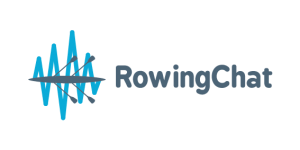How to get to the head race start line at the optimal boat speed.
Timestamps
00:45 Long distance racing
Feel confident at the beginning because you’ve done a good start – get into the zone and enjoy the process.
A rolling or flying start means your boat is already moving – the start gets you up to race speed so you’re close to race pace as your bows go over the start line.
02:00 Stroke sequence
The precise details matter a little less than in sprint races. Guy Pooley is a very skilled head racer – he never wasted energy on excess strokes before the start line. Learn how quickly your boat gets up to race speed. Practice this in your warm up each time you row.
Approaching the start line at half pressure and then increase the pressure first (keep rate controlled) and when 5 strokes away from the timing point begin your start sequence.
I like to do three 3/4 length strokes. This allows a short, punchy stroke with good leg drive power. Then go to full slide on the 4th stroke. Keep the punchy power and start to increase the stroke rate. Get this to well above your mid-race rate – go between 2-6 points higher. This allows you to step down to race pace and to get a good contrast and rhythm. It should feel easy to achieve race rate.
05:45 Step down to race rate
Create more rhythm as you take the rate down while continuing the long, accelerated strokes. Let the stroke feel elastic and long in the water. Move towards this type of stroke and your rate will naturally drop a few points. Hold this step down for 40 seconds to a minutes – allowing the rate to fall a little more. Use making a rhythm as the method to step down towards race rate.
08:00 How to make a rhythm
Rhythm is the contrast between the power and recovery phases – a big contrast gives you rhythm.
Do this by having a strong second half of the power phase. Do a confident swing-and-draw to end the power phase. This adds a little more boat speed. As you move to the recovery separate the arms from the body on the recovery – get them fully straight while still leaning back towards the bow. Pivot after your arms are straight. A clear sequence of arms and body.
This separation of hands and body helps to bring the rate down. On the next stroke make a strong second half of the power phase and again, separate the arms and body. The handle speed in towards your body is the same as the handle speed away from your body. Keep it proportional.
Make the rhythm over three strokes so it’s very strong. It establishes the race rate you will use through the rest of the race (except the sprint finish).
11:20 Approaching the start line
As you row towards the start – don’t rush those first three strokes. Be powerful at the lower rates to increase the hull speed. The stroke coach averages over three strokes so it won’t show race splits immediately. You must have leg power on these first three strokes. As the boat moves faster on the second stroke so your rate will be a little higher than the first and the same for the third stroke.
When practicing in training hold the rate down in these first three strokes and see what happens on strokes 4-5-6-7 with your 500m split compared to what happens if you let the rate rise on the first three strokes.
Let your speed coach measure meters per second because it’s more sensitive to boat speed changes. Use this in practice to find out how quickly you can get the boat hull up to race speeds.
Be confident working hard at the start – you won’t exhaust yourself with a hard start.
